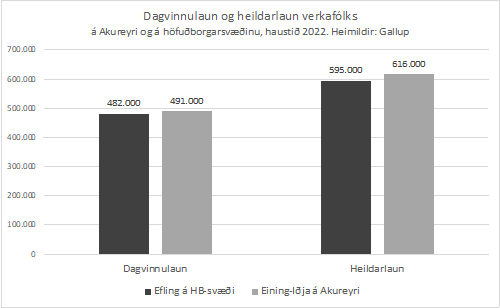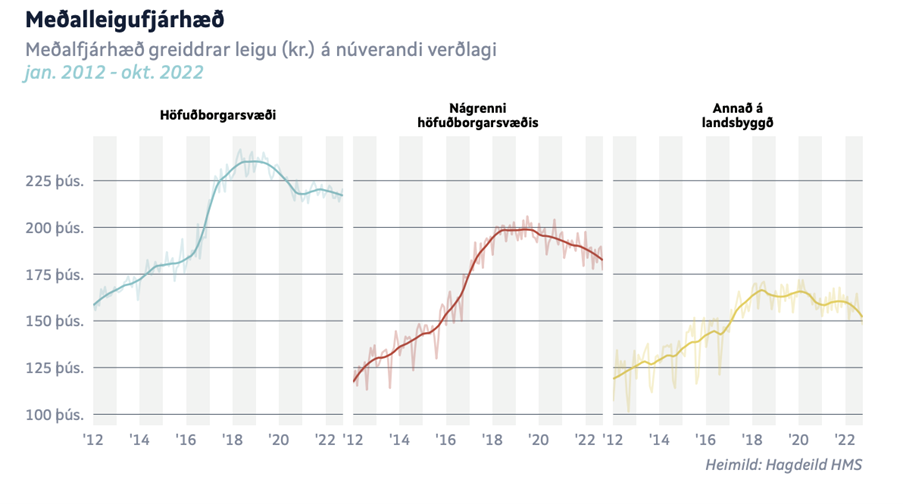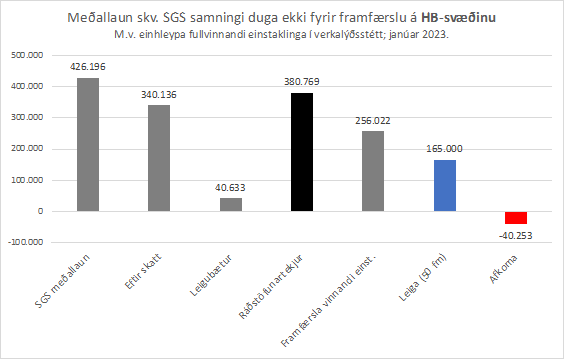Efling has requested to use it´s negotiation rights for a collective agreement that takes into account the composition of the group of workers in the capital area and the special conditions that those people live in. It should always be the goal of collective bargaining agreements for low-wage workers that wages are sufficient for the cost of living in the area where the people live and work. Efling´s demand mainly concerns the making of a new salary table and a special cost of living increase due to unusually high housing costs in the capital area, as is often the case in neighboring countries (e.g. in London).
A need for a new salary table
Arguments for Efling´s uniqueness in this area are as follows:
- SGS’s collective agreement on daily wages for workers in the countryside would result in lower daily wages for workers in the capital area, which is approximately from 12.-13.000 kr per month up to almost 20.000 kr for some.
- The reason for this is because members of Efling are generally in lower salary categories and lower length of service levels. In addition the SGS contract delivers other benefits better to the rural associations, such as bonuses and additional payments.
- Therefore Efling has demanded a different contract and salary table that is more in line with the composition of workers in the capital area. The goal is to provide the union members at least a comparable salary to what the SGS contract generally provides to workers in the countryside.
This special position of members of Efling is highlighted in recent data from Gallup´s salary surveys conducted last September and October, on one hand among members of Efling and the other hand among members of Eining – Iðja in Akureyri. Questions in the surveys are the same and the data therefore comparable.

The results support Efling´s arguments. The daily wages of workers in Akureyri are higher than those in the capital area. It reflects that the workers in Akureyri are ranked in a higher categories and salary table levels than in the capital area.
Total wages are daily wages plus bonuses, overtime pay and overtime. They were about 21.000 kr higher for workers in Akureyri than for workers in the capital area. It reflects higher payments (including overpayments), higher bonuses and other payments.
One might assume that this big difference in total wages would be due to longer working week of workers in Akureyri, but it´s actually the other way around! The working week for full time workers in the capital area is almost 2 hours longer than of those in Akureyri. However, the salary result is much worse for capital area workers. Other characteristics of the collective agreement result in higher total wages for workers in Akureyri.
This difference in total wages (21,000 kr per month) is more than Efling requests as a special living cost increase (15,000 kr), to compensate for the unusually high housing costs in the capital area. This is the second part of Efling’s claim.
Special compensation for housing costs
Workers in the capital area not only have the lowest wages of workers in Iceland, but they also live with the highest housing costs by far. Rent is generally 45% higher in the capital area than in the countryside, and the purchase price of apartments per square meter is 50-80% more expensive in the capital area (varies depending on the urban area in the countryside).
A recent comparison of rental prices can be seen in the attached photo. The data comes from the Housing and Human Resources Agency with the latest figures from last October.

The average rent in the capital area is now around 220,000 kr per month but about 152,000 kr in the countryside. The chart also shows how housing costs have risen in recent years for renters – and house price increases are even higher.
In order for workers to handle the enormous housing costs in the capital area, a significantly higher disposable income would be needed than is currently available. However the salary of capital area workers are lower and rent benefits are returned worse in the capital area, as unbelievable as it is.
The consequences of this include that the percentage of members of Efling who live in their own housing has dropped from 64% in 2009 to 38% in 2022 and the percentage of renters has more than doubled. Now almost half of the members live in rented accommodation and have little or no chance of getting their own apartment.
These dire circumstances of members of Efling in the capital area are the reason why Efling now needs a different collective agreement and a real compensation to deal with housing costs.
Although the recent agreement of Starfsgreinasambandið (SGS) may be sufficient for workers in the countryside, due to lower housing costs there, it is by no means sufficient in the capital area. This can be seen in the attached picture, which shows the income for a self-employed single person who lives in a “cheap” 50 sq m rental property in the capital area and has an average salary according to the SGS salary scale.
A person in this situation has to add significant extra work to make ends meet, because higher taxes and lower rental benefits eat up too much of the extra income.

Samtök atvinnulífsins (SA) has called this demand of Efling “disgusting and consequential”, for asking for more than the SGS companies agreed. But behind the demand that are strong arguments, both the ones that have been discussed above and many more. The real consequential down fall happened when the housing costs in the capital area went out of control and hit Efling´s members the hardest.
If Efling would not be pushing for better conditions now, the union would be failing it´s members. That must be the common understanding – except among those who speak on behalf of the employers’ association (SA – Samtök Atvinnurekenda).